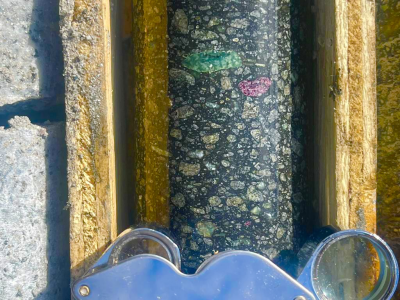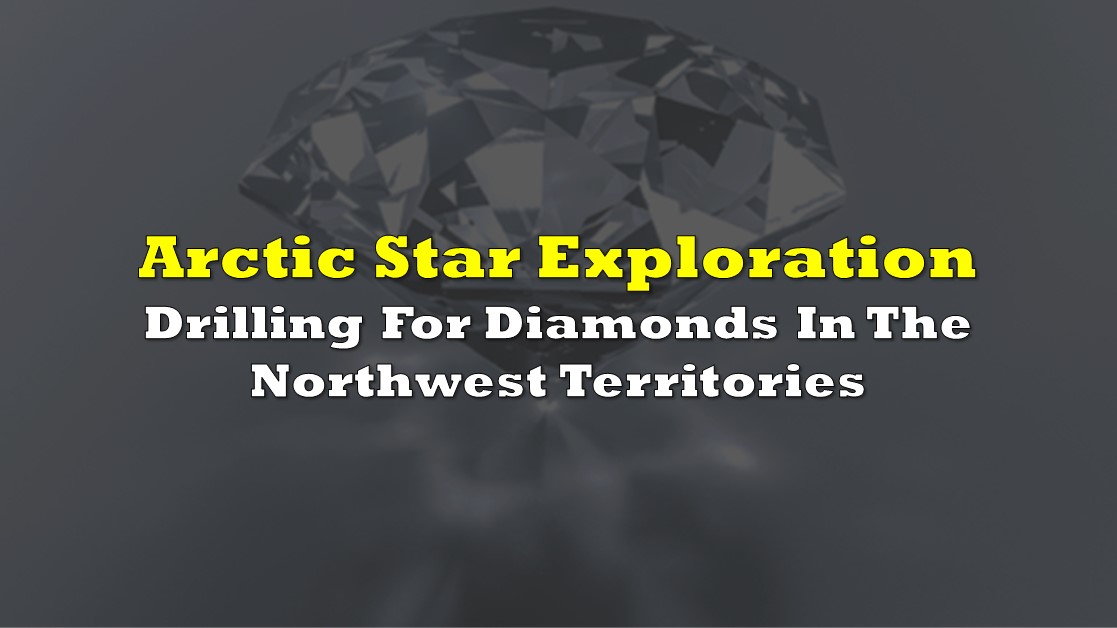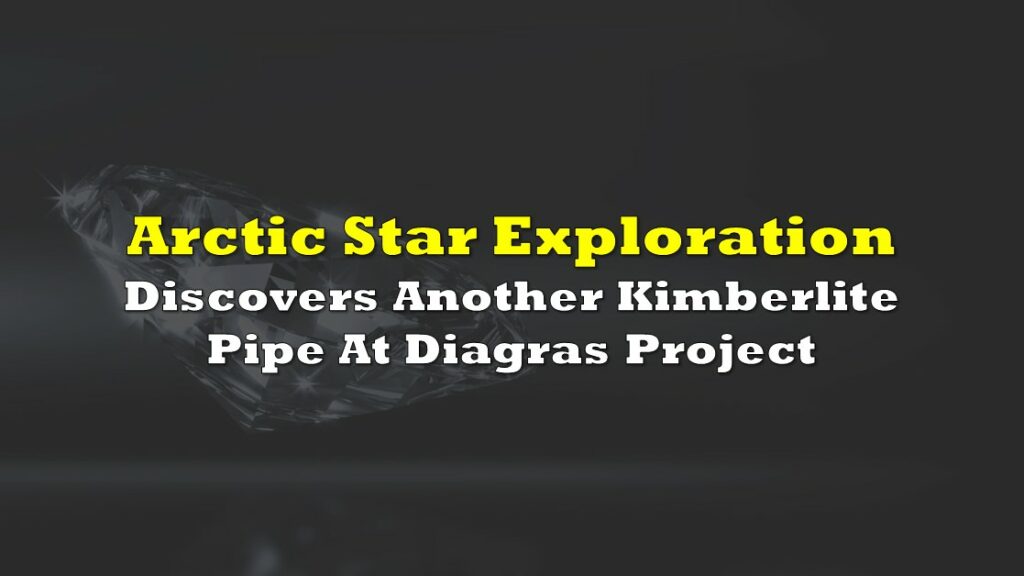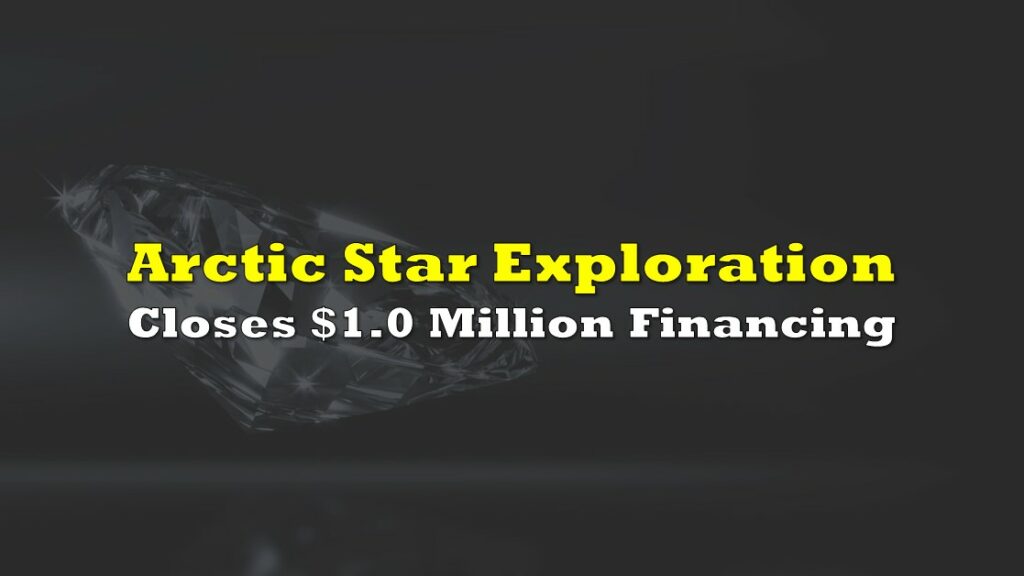Arctic Star Exploration (TSXV: ADD) is a Vancouver-based junior mineral exploration company that is actively exploring for diamonds in Canada’s far north as well as within Finland. Less than two months ago, the firm announced that it had commenced drilling on its flagship Diagras Diamond Project in the Northwest Territories, the results of which are already beginning to be seen.
The 48,346 hectare Diagras property is located in the northeastern part of the prolific Lac de Gras kimberlite field, approximately 300 kilometres northeast of the city of Yellowknife. The project consists of 58 contiguous claims that were originally staked by Arctic Star, and is a joint venture with Margaret Lake Diamonds, with Arctic Star owning an 81.5% interest and Margaret Lake an 18.5% interest.
The property is situated 22 kilometres northeast of the Diavik diamond mine operated by mining giant Rio Tinto, and 36 kilometres east of the Ekati Mine, Canada’s first surface and underground diamond mine, which entered into production in 1998 and is currently owned and operated by Arctic Canadian Mining Company.
Exploration
In the Spring of 2021, Arctic Star discovered the Sequoia Kimberlite Complex on the property, recovering two commercial-grade diamonds, indicating the potential for large diamonds greater than 52 cts (karats). The company has begun the HQ diameter diamond drill program on the Sequoia kimberlite complex. The program is to consist of ten holes that will test the property’s north-south trending kimberlite complex, with the first hole drilled 22 meters south of the original 2021 discovery hole.
HQ core drilling is a process of using a hollow diamond core bit for drilling and collecting cylindrical core samples until the core barrel is full. To find the country rock contacts of the north-south trending kimberlite complex, Arctic Star’s strategy consists of drilling a vertical hole to a depth of 200 meters in the east-west center of the kimberlite, and then drill two additional holes to the east and the west at an angle until they exit the kimberlite. The purpose of the drill program is to delineate and define the different kimberlite phases and analyze the cores to determine the tonnage, geology and geometry of the Sequoia kimberlite complex, and to estimate the different diamond grades and occurrences.
In terms of diamond composition, the results of the first diamond study conducted on the Sequoia Complex were received in mid-May. Conducted by the Saskatchewan Research Council’s diamond lab, the results point to 50% of the diamonds being nitrogen-free type IIa diamonds, while 33% are Type IaA, and 17% are Type IaB. Results are significant in that only 2% of the worlds diamonds are Type IIa.
The Geology
Kimberlites were formed by intense volcanic activity that crystallized minerals and rocks within molten liquids under extreme pressure, which were then forced upwards towards the surface where they cooled and typically occur as vertical cylindrical pipes in the earth’s crust. Kimberlite pipes are a common source of diamonds. However, not all kimberlite pipes contain diamonds, and even if they do, the diamonds might not be commercially viable.
Modern airborne geophysical technologies such as VTEM can often clearly identify the kimberlite pipes and can pinpoint the precise location of these pipes that show up on the data screens, as a result of the density of the pipes relative to the surrounding geology. This enables geologists to easily follow up with ground geophysics, which works to reduce the guesswork of where to drill, making diamond exploration reasonably cost-effective. This is due to the most expensive element of exploration being the actual drilling. Knowing exactly where to drill greatly reduces the risk of missing your target and running up costs.
In April, Arctic Star also identified that it has completed its phase two airborne geophysical survey of the entire Diagras property. The survey consisted of using high resolution magnetic and EM at a 75 metre line spacing for the purpose of identifying two different types of drill targets:
- Class A, which are new kimberlite like anomalies that have not been previously drill tested and are the focus of the current drill program, and
- Class B, which have been the earlier exploration focus that led to the discovery of 5 new kimberlites.
The airborne survey data is being followed up by ground-based geophysical surveys to further confirm the airborne targets. Upon completion of the current drill program, the results will be used to conduct a 2023 bulk sample program to determine a diamond valuation of the property.
The Recent Discovery
Lastly, the data aggregated to date on the property already appears to be paying off. Following the discovery of the Sequoia Kimberlite Complex last year, the company this past week identified that it has now found another kimberlite pipe, referred to as the Arbutus Kimberlite. The discovery was made following the drill testing of a Class B type target, after analyzing data collected from the geophysical studies conducted.
The new discovery, while data is preliminary, is estimated to consist of a kimberlite that measures 200 metres long and 25 metres wide, which is based on drill intercepts and geophysics. The core recovered by the company has yet to be analyzed to determine if it contains diamonds, however it is said to contain abundant diamond and mantle indicator minerals.

The discovery of the Sequoia kimberlite field gives Arctic Star the potential for another major diamond field in the region, while the company is well funded with the recent closing of a $3.8 million private placement financing. With 179 million shares outstanding and a market capitalization of $19.7 million, Arctic Star appears to be a compelling opportunity for diamond-oriented junior exploration investors.
FULL DISCLOSURE: Arctic Star Exploration is a client of Canacom Group, the parent company of The Deep Dive. The author has been compensated to cover Arctic Star Exploration on The Deep Dive, with The Deep Dive having full editorial control. Not a recommendation to buy or sell. Always do additional research and consult a professional before purchasing a security.









